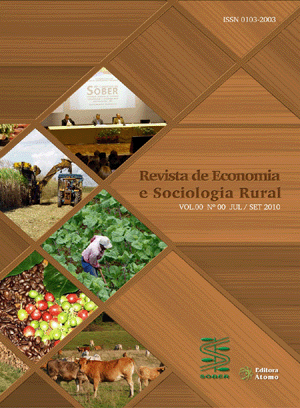Abstract
According to FAO (2015), roughly 805 million people worldwide do not have enough food to have healthy and active life. In addition, according to the UN (2012), the world population in 2024 will exceed 8 billion people and, by 2050, more than 9.5 billion, requiring more food supply. Population growth, increased per capita consumption, per capita income and expansion of cities in the coming decades make the debate on the inability to meet the new human needs more present. Regarding supply, constraints on productivity expand the size of the problem. This study aimed to analyze how the growing world demand for food, in the period from 2012 to 2024, may increase the demand for new farmland in Brazil and the conditions to meet it. Considering the limits of the agricultural frontier defined by Embrapa (2014), it is concluded that, although there is a small area legally available for agricultural expansion in Brazil, new demands must be met with increased productivity and/or replacement of culture, especially on extensive livestock farming. Small regional productivity adjustments and production relocation will be sufficient to meet new demands in the analyzed period.
Keywords: global demand for food; land use; productivity

 Crescimento da demanda mundial de alimentos e restrições do fator terra no Brasil
Crescimento da demanda mundial de alimentos e restrições do fator terra no Brasil